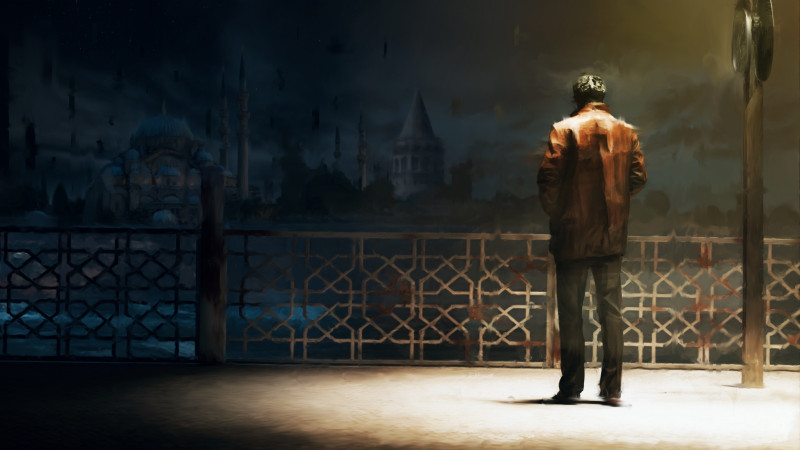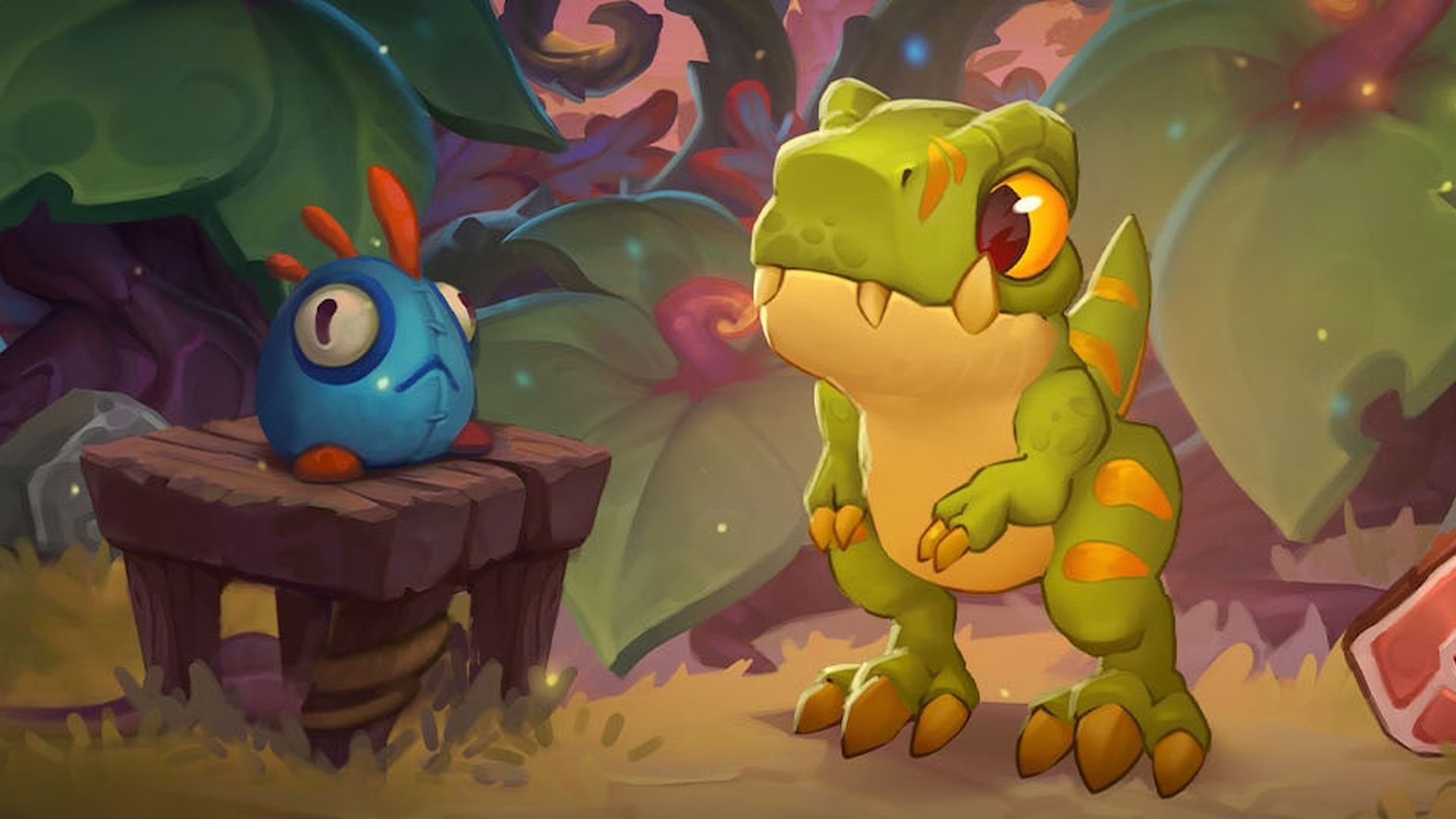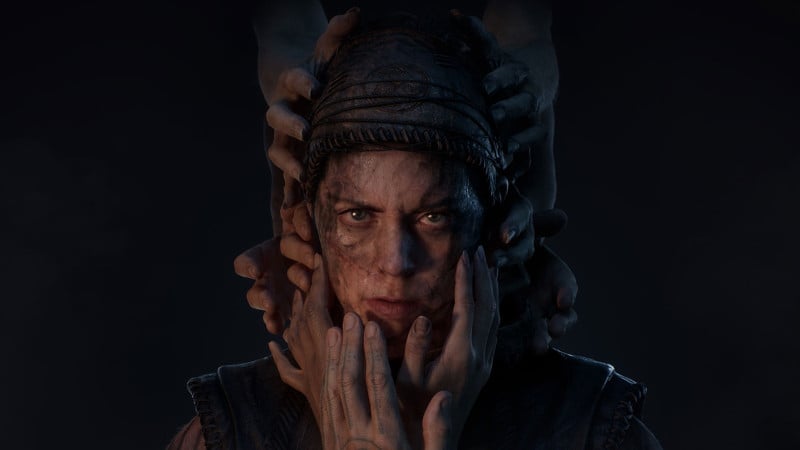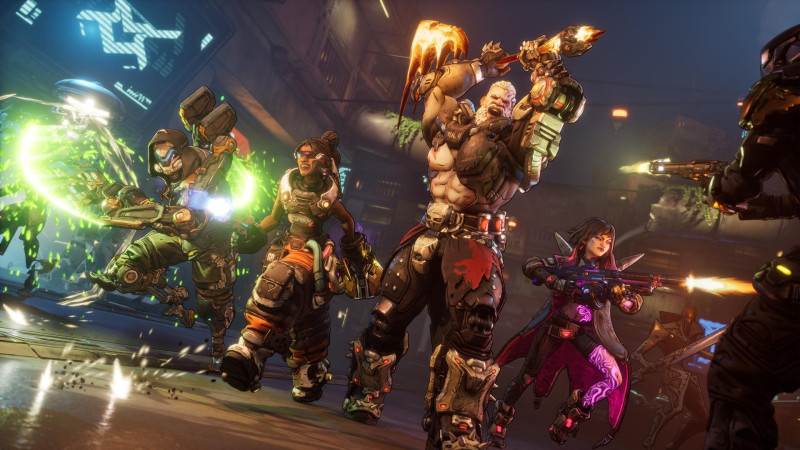
Resident Evil's Raccoon City: A Complete History - From Sleepy Town to Zombie Nightmare

Survival horror is finally coming home. Raccoon City is the setting for the classic Resident Evil games, its awesome remakes, and some surprisingly relevant spinoffs. As far as iconic locations in zombie fiction go, Raccoon City easily hangs in the hallowed company of holy horror spaces like the Monroeville Mall and the Winchester pub.
Just as it seemed that Resident Evil had definitively closed the book on RC, Capcom announced a return to the ruins of Raccoon City for the ninth main entry in its seminal survival horror series. For longtime fans, Resident Evil Requiem feels like it could be a joyous reunion…
But life in Raccoon City can be… complicated. Infrequent visitors might find themselves asking questions like “Where am I?” “What the heck happened here?” “Does the world know about the miraculous healing powers of colored herbs?” and “Why do I have to put jewels in a statue when I go to the DMV?”
That’s why we’ve assembled this ultimate field guide to Raccoon City. We’ll explore RC’s behind-the-scenes history, discuss everything that went down in the games, unpack the town’s enduring appeal, and solve a few mysteries along the way.
Why “Raccoon City?”
Introduced in the opening seconds of the original Resident Evil, or “Bio Hazard” in Japan, “Raccoon City” had an important role to play in establishing the series.
Resident Evil’s predecessor, the Japan-only Famicom game Sweet Home, took place in a haunted mansion in the Japanese countryside. Producer Tokuro Fujiwara wanted to remake the 8-bit cult classic for a new generation of consoles, but Capcom no longer had the rights to the film from which Sweet Home was adapted.
So Fujiwara and director Shinji Mikami reworked the concept to center around zombies instead of haunted paintings, envisioning the game as an interactive horror movie, complete with a haunting score, cinematic pre-rendered backgrounds, and jump scares a-plenty. Instead of taking inspiration from supernatural, psychological J-horror such as Sweet Home, the developers instead looked toward the West.
Resident Evil clearly owes a massive debt to George A. Romero, the godfather of the zombie genre who shot his movies in the small cities surrounding Pittsburgh, Pennsylvania. Setting the game in a fictional Anytown, U.S.A. allowed Capcom to capture the vibe of classics like Dawn of the Dead and create inroads to a Western audience more effectively than any live-action FMV sequence with cheesy American actors
Early drafts of Bio Hazard had the action taking place in a town called “Harnbee,” located in either New Jersey or Arkansas. Capcom ultimately decided to name the city after an animal, which isn’t strange by itself, as the fine folks from Buffalo, New York or Dinosaur, Colorado will tell you. Still, adorable trash pandas seem like an odd choice for spine-chilling survival horror.
One longstanding theory is that Capcom was referencing the species of “raccoon dog” called tanuki, which Western gamers might be familiar with from its presence in Japanese folklore and pop culture. These cute little guys look a lot like raccoons, save for some slight anatomical differences, and they’ve quite frequently appeared in video games. So could “Raccoon City” just be a localized version of “Tanuki Town?” It’s not likely.
For one thing, tanuki aren’t even raccoons at all as far as taxonomy is concerned. More importantly, the original Bio Hazard refers to its setting as “Rakūn Shiti,” using the English transliteration of “raccoon” as opposed to “tanuki” or “araiguma,” the Japanese word for the actual species. With Raccoon City, Capcom is very specifically referring to the North American mammals. But why?
Raccoons aren’t native to Japan, but in the ‘70s, a popular anime called Rascal the Raccoon led to tons of Japanese people importing the little critters to keep as pets. This was not a good idea, as anyone who has to deal with these feral, garbage eating creatures can tell you, and today, raccoons are classified as an “invasive alien species” that causes millions of dollars in damages to crops and wildlife all throughout Japan.
Were the mindless swarms of flesh-devouring zombies that infest “Raccoon City” inspired by these destructive varmints? Could it be a commentary on America’s less-than-stellar reputation on the global stage, or at least the behavior of its most obnoxious tourists? It’s certainly possible, but it’s unlikely that a game that’s such a loving homage to American horror films would make that kind of dig. The real answer is probably more simple: the mansion is in a forest, Raccoons live in the forest, hence “Raccoon Forest,” which in turn gave the city its name.
In the end, Capcom wanted to make a zombie game set in the U.S. and came up with a plausible-sounding place for it to happen. There’s no hidden meaning or dark secret lurking at the heart of Raccoon City… At least, behind the scenes. Within the world of Resident Evil, there’s a lot going on beneath the surface.
Raccoon Rising
Nestled in the Arklay mountains, bordered by the sprawling Raccoon Forest to the north, was a small midwestern town called Raccoon City. Founded in the 1800s, RC was largely unremarkable until the end of the swinging ‘60s, when its struggling economy was revitalized by a corporate benefactor that would one day bring about its total destruction.
In 1968, three best buds with a crazy dream got together to form the Umbrella Corporation. The plan? To create a superior breed of humans through twisted science. While none of the deeply unpleasant men who founded Umbrella had any deep ties to Raccoon City, Oswald E. Spencer just so happened to have some valuable real estate that would be perfect for their evil ambitions.
A few years earlier, in 1962, Sir Spencer commissioned a famous New York architect named George Trevor to build his dream home in Arklay County. Situated above a sprawling limestone cavern large enough to host a secret underground laboratory, the mansion was to be a recreation of Spencer’s childhood estate back in England… with a few twists.
Trevor made his name designing intricate buildings with traps, secret passageways, and tricksy puzzles– the kinds of gimmicks that make lunatics like Spencer (and strategy guide writers) squeal. As the mansion neared completion in 1967, Spencer grew more paranoid, as evil masterminds tend to do. He was convinced that Trevor would reveal his secrets, so he convinced the architect to bring his family to Raccoon City and conspired to wipe them all out.
Spencer infected Trevor’s wife Jessica and daughter Lisa with the Progenitor Virus, precursor to the T-virus, the manmade zombie plague that would later doom Raccoon City. Jessica died, and was entombed beneath the mansion. Lisa survived, but mutated into a shambling, nigh-unkillable monstrosity. Umbrella kept Lisa prisoner for 28 years, experimenting on her to produce even deadlier concoctions like the G-virus.
As for old George Trevor himself, he wound up trapped in a labyrinth of his own making. According to his diary, while searching for his family he actually forgot the solutions to the puzzles he created, which is relatable if nothing else. Unable to juggle all the crests, keys, and cranks that unlocked the Spencer Mansion, Trevor died of thirst and starvation deep within the bowels of his final masterpiece.
With those loose ends somewhat messily tied up, Umbrella was free to continue with its mad science, thriving within a blissfully unaware Raccoon City. The town was growing rapidly, and the jobs provided by Umbrella paid for some much-needed infrastructure. Founded in 1969, the Raccoon Police Department eventually purchased a palatial art museum to convert into its headquarters at the urging of future chief (and madman) Brian Irons.
Now safe under the watchful eye of a deranged serial killer, the growing population soon enjoyed the benefits of a zoo and its adorable mascot, Mr. Raccoon, a kick-ass public transit system, a training school for gifted youngsters, a university, a bustling downtown shopping district, and at least one pro football team. Give it up for your Raccoon City… Sharks? RC also hosted a thriving media industry that somehow sustained eight newspapers and a TV news network, all cut down in their prime twenty years before the pivot to video.
Umbrella kept the city’s economic blood pumping with its legit industries above ground, but the real money came from the top secret research it conducted under Raccoon City’s nose. The eugenicist vision of Spencer and the founders was largely replaced with the extremely lucrative industry of creating bio-organic weapons (B.O.W.s) for the highest bidder. Deadly as they are, the Hunters, Lickers, and Chimera Umbrella churned out by the truckload were merely the beta versions of its ultimate creation, the mighty Tyrant.
In the early ‘90s, Umbrella cemented its hold on Raccoon City by pouring tons of money into a revitalization project called “Bright Raccoon 21.” It built hospitals and orphanages, renovated the landmark clock tower, and recruited a special ops police unit called S.T.A.R.S. in 1996. It also took the opportunity to construct not one but two secret NEST facilities underground, where scientist William Birkin was hard at work on the G-virus.
Umbrella owned the mayor, the police department, and employed 40% of the city’s 100,000 citizens. It had infected Raccoon City like one of its patented viruses, transforming the rust-belt industrial town into a bustling metropolis under the iron grip of Umbrella.
This didn’t last very long.
The Raccoon City Destruction Incident
The situation began spiraling out of Umbrella’s control in early 1998, when strange occurrences around Raccoon City started drawing unwanted attention. Strange dogs with wet, decaying flesh were spotted in the woods, and a series of grisly murders seemingly committed by cannibals had residents spooked about a possible death cult lurking in the forest.
The heat made Umbrella nervous, so it called upon its intelligence agent extraordinaire, Albert Wesker. As the company man in charge of S.T.A.R.S., he was to lead the unit on a sham investigation to clean up the mess and retrieve precious combat data, the single most valuable commodity in the Resident Evil universe. Wesker, magnificent bastard that he is, was plotting to ditch Umbrella at the first opportunity, but he complied with his orders.
On the 23rd of July, 1998, the S.T.A.R.S. Bravo Team helicopter crashed in the forest, courtesy of Wesker’s sabotage. The man in the shades personally led Alpha team on a so-called rescue mission that trapped them in the iconic foyer of the Spencer Mansion. As the events of Resident Evil 1 play out, S.T.A.R.S. members Chris Redfield and Jill Valentine battle through zombies and B.O.W.s, discover the hidden lab beyond the manor walls, and learn of Umbrella’s role in the slaughter.
As Bravo Team rookie Rebecca Chambers discovered in the extremely mid prequel, Resident Evil 0, the Mansion outbreak was the work of Umbrella co-founder James Marcus, or rather, a mutated leech posing as the murdered magnate. She reunites with Jill and Chris, only to be betrayed by Wesker, who unleashes Umbrella’s apex weapon on his former comrades. Wesker is seemingly skewered by the Tyrant, which is destroyed by a deus ex rocket launcher courtesy of cowardly pilot Brad “Chickenheart” Vickers, as the surviving S.T.A.R.S. members (and a chemically-enhanced Wesker) escape the exploding facility.
Umbrella immediately went to work covering its tracks, hushing up any media murmurs and bribing Chief Irons to discredit and disband S.T.A.R.S. The corporation’s containment efforts were about as successful outside of the lab as in it, and the walls were closing in. Sightings of monsters in the Arklay region continued, growing ever closer to the town as summer turned to fall. William Birkin had seen enough.
The man behind the mutagenic G-virus was preparing to hand over his research to the U.S. government, in exchange for a clean slate and protection for himself, his wife Annette and daughter Sherry. Umbrella caught wind of his intentions and dispatched a spec-ops task force to NEST on September 22nd. In the ensuing firefight, Birkin injected himself with his G-virus, transforming into a body horror monstrosity and releasing T-virus samples among the city’s rats and into the water supply. Raccoon City would be overrun within days.
The military descended on the city in a failed attempt to contain the disease, while Umbrella dispatched its own private mercenary group, the UBCS, to contain the situation. Umbrella also made the most of the opportunity to test new B.O.W.s, airdropping a Nemesis pursuer and handful of Tyrants into the chaos to dispatch unwanted survivors, recapture the G-virus, and explore their combat capabilities in a disaster scenario of its own design.
By the 28th of September, the RPD had fallen and the army had all but abandoned Raccoon City. Those who remained alive did whatever they could to survive the outbreak, often in episodic scenarios perfectly suited for online co-op sessions. On the 29th, a rookie cop with heartthrob hair arrived in Raccoon City, late for his first day on the job and somehow unaware of the destruction that lurked within. Welcome to Resident Evil 2.
Leon Kennedy linked up with Claire Redfield, a young woman searching for her brother Chris, who was off in Europe doing his own research on Umbrella. Together, the two sought refuge in the zombie-infested RPD, evading “Mr. X” and a mutated William Birkin with help from Ada Wong, an agent working for Umbrella’s unnamed corporate rival. Together, they storm the NEST, rescue Birkin’s daughter Sherry, witness Ada’s apparent demise, defeat their tormentors, and haul ass out of the self-destructing facility on a speeding train.
Resident Evil 3 revealed that Jill Valentine was trapped in town while all this was going down, her last escape halted by the relentless Nemesis, programmed to murder any remaining S.T.A.R.S. members. Jill teams up with Carlos Oliveira and his ragtag group of UBCS spooks to infiltrate the secondary NEST facility and find a vaccine. The Nemesis is destroyed, along with any potential T-virus cure, and Jill and Carlos flee the city shortly before its destruction.
On October 1, the U.S. government decided to wash its hands of Raccoon City by wiping it off the map. The President ordered the launch of an experimental thermobaric missile to destroy the town, any evidence of the outbreak, and every living and unliving creature still inside. When the dust settled, all that remained of Raccoon City was a smoldering crater.
Umbrella’s role in the disaster was exposed by journalist Alyssa Ashcroft, a survivor who revealed the existence of B.O.W.s to the world. The U.S. President resigned in disgrace, but the government managed to keep its dealings with Umbrella under wraps. Facing prosecutions, lawsuits, and dwindling sales following the death of 100,000 people, the Umbrella corporation shriveled and died, leaving Raccoon City as its final, shameful legacy.
The Uncanny City
The few brief mentions of Raccoon City in Resi 1 sparked our imaginations, and RE 2 made them a reality. While the sequel largely took place inside the ornate RPD building, RE 2 begins with a bang, throwing Leon and Claire into the burning streets of Raccoon City proper and daring them to survive the horror. Clambering up fire escapes and sprinting past zombie-filled basketball courts was such a mind-blowing expansion of scope in 1998 that we didn’t really notice that Raccoon City doesn’t make any sense. At least, not for an American city.
The pre-rendered backgrounds of the original Resi 2 and 3 are chock-full of narrow, winding streets and mazes of tiny alleys that lead to dead ends, none of which are really representative of a bustling mid-sized midwestern metro. In fact, Raccoon City as originally envisioned feels a lot like the commercial area of a Japanese city– Shinjuku draped in grimy Western set dressing.
Most Japanese game devs in the ‘90s weren’t given the budget to fly across the Pacific to do in-depth research on cities in the United States– Konami famously used the Arnold Schwarzenegger family comedy Kindergarten Cop as its primary reference when conceiving the streets of Silent Hill. RC isn’t supposed to be an accurate U.S. city, it’s an imaginary version of one cooked up via Capcom’s cultural osmosis, based on its impressions of American culture from afar– it’s no coincidence that RE 2’s only accessible building outside of the RPD is Gun Shop Kendo. The result is a Raccoon City that feels familiar enough to Western audiences with a subtle undercurrent that something is wrong, the uncanny valley effect played out in environmental design.
This sensation diminished as the series evolved beyond pre-rendered backgrounds, with the multiplayer-focused Outbreak games returning to a fully polygonal RC. The somewhat forgotten spinoff has been thrust into the spotlight with the reveal that Resident Evil Requiem will star Grace Ashcroft, daughter of reporter Alyssa Ashcroft who was a prominent playable character in Outbreak. It’s a series worth revisiting even without the ability to play online, in large part because of how it expands Raccoon City. Survivors explore bars, hotels, apartment buildings, a zoo, and even Raccoon University campus, fleshing RC into a more fully realized space while maintaining the gritty, pre-HD vibe.
The advent of the Resident Evil remakes gave Capcom the opportunity to update Raccoon City for a new generation. The impressive RE Engine provided realistic, high fidelity graphics, but it feels like something was lost in translation. While the city more closely resembles a thriving midwestern tourist destination, with towering skyscrapers and a more sensible urban layout, it sacrifices the otherworldly aesthetic of the original games. It feels less like a waking nightmare and more like an actual place– even though a real-life Raccoon City is rather implausible. Umbrella funding aside, the sheer amount of amenities and infrastructure built to serve such a small population would probably raise some suspicious eyebrows and definitely jack up the rent prices.
And even if it could exist in our world, that begs our final question: where is Raccoon City supposed to be? Capcom has never definitively stated its location, and the most specific the canonical series ever got was in the intro to the Resident Evil 3 remake.
The (fantastic) tie-in novels by S.D. Perry explicitly placed the city in rural Pennsylvania, as did the screenplay for George Romero’s legendary unproduced Resident Evil adaptation. The Paul W.S. Anderson movies kept things vague, with some clues that Raccoon City is either near Allentown, PA or somewhere in Michigan, but most of the action was filmed in Toronto, Canada. The ill-fated Welcome to Raccoon City film was similarly shot in Ontario, but it too declined to name the state it stood in for.
Countless fan theories have emerged throughout the decades, using every snippet of lore and a whole lot of logical leaps in an attempt to deduce the location of Raccoon City. Plausible arguments exist for Colorado, South Dakota, and even Cleveland, Ohio, but the prevailing hypothesis is that Raccoon is a stand in for Springfield, Missouri. There aren’t many mountains in the midwest, after all, but the foggy Arklay hills could be interpreted as Missouri’s Ozark region. Springfield also happens to be situated above massive limestone caverns with plenty of room for growing young B.O.W.s.
There are a few holes in this hypothesis, like the fact that Leon and Claire emerge from Raccoon City into a sprawling desert that is far removed from any geographic feature of the Show-Me State. The truth is, we probably were never supposed to know exactly where Raccoon City is– and maybe that’s what makes it so creepy.
Raccoon City could be the growing town up the road where a soulless corporation just built a new billion-dollar data center. It could be the quaint hamlet up by the woods that hosts a mysterious old house that’s rumored to be haunted. It could be your city, that one day you might have to escape in a desperate dash for survival. For nearly 30 years, Raccoon City has played host to countless mysteries and unanswered questions, some of which may finally be revealed in Requiem. But one thing has never been in doubt: Raccoon City is a scary place to be.






